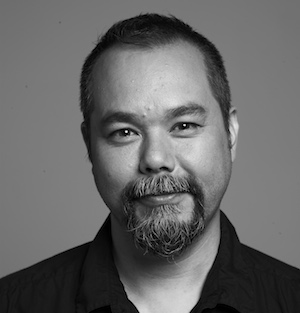|
|
ICAD2016
KEYNOTE SPEAKERS

Viveka Turnbull Hocking |

George Khut |

Adrian KC Lee |
A Design-led Approach: opening up a cross-disciplinary discourse into design research |
Biofeedback and beyond |
Auditory scene analysis, object formation and selection and their implications with respect to stream-based sonification |
| Design as a profession emerged out of the industrial revolution. However, the word 'design' has been around much longer and describes an activity that we as humans all do and have done for some time. A clear distinction can be made between uppercase 'Design' as the profession verses lowercase 'design' as the activity in order to highlight the many uses, meanings and applications of the activity of design independent of the fields of Design. Although design may have many forms, there is an overriding commonality in a process concerned primarily with generating 'what could be' rather than 'what is', of which the discipline of Design and our approaches can contribute. This key note address aims to initiate a conversation about the value of Design approaches to the research community and the multi-disciplinary area of sonic information design. To enable such a dialogue this address offers some insights into the characteristics of design: what it is, how it is done and why it might be of significant value; outlining the nature of design-led approaches that are emerging in order to open up a cross-disciplinary discourse into design research. |
Affordable wearable bio-sensing technologies and mobile operating systems capable of supporting realtime displays are opening up new possibilities for interactive sound design and composition for biofeedback interactions. George Khut will present examples of his work with heart rate and brainwave interactions, and consider historical precedents for this work in the field of electronic art and computer music, along with more recent developments in the area of commercial "wellness apps", and outline opportunities and challenges for real-time sonification and sonic interaction design. |
Sound arriving at our ears is the sum of acoustical energy from all of the auditory sources in the environment. In order to make sense of our auditory world, we rely on different stimulus features (e.g., pitch, timbre, spatial cues) to segregate one sound source from another. Furthermore, we can flexibly select one sound stream to listen to (e.g., enjoying the violin melody) or switch attention to another (e.g., following the pizzicato of the cello). The process that enables us to listen to one sound out of many is often referred to as auditory scene analysis and, remarkably, while most humans and other animals can do it seamlessly, it is still a difficult challenge for the most sophisticated computer algorithm. In this talk, I will introduce different aspects of auditory scene analysis, as well as discuss a closely related challenge–solving the "Cocktail Party Problem." I will discuss how using an auditory object-based attention framework can help elucidate these perceptual and cognitive processes, thereby shedding light on different aspects of sonification (e.g., stream-based sonification). |
| Dr Viveka Turnbull Hocking's work looks at design-led approaches to research. Her research has included design for social innovation, sustainability and now is exploring design for cross-species cohabitation. Her design-led approach to research engages with cross-disciplinary conversations and collaborations through the area of design and the built environment. She researches through the Fenner School of Environment and Society at the Australian National University and teaches in the School of Design and Architecture at the University of Canberra. |
Dr George Poonkhin Khut is an artist and interaction-designer working across the fields of electronic art, design and health. George's body-focussed artworks use biofeedback technologies to re-frame experiences of embodiment, health and subjectivity. In 2012 he was the winner of National New Media Art Award, at the Queensland Art Gallery, Gallery of Modern Art (GoMA). Recent projects include the BrightHearts (iOS) app (available on iTunes App Store), "Behind Your Eyes, Between Your Ears" a residency and public laboratory at the National Portrait Gallery, Canberra; and "CUSP: Design into the Next Decade", a group exhibition curated by Object Gallery (Australian Design Centre).
|
Adrian KC Lee is an Associate Professor in the Department of Speech & Hearing Sciences and at the Institute for Learning and Brain Sciences at the University of Washington, Seattle, USA. He obtained his bachelor's degree in electrical engineering at the University of New South Wales and his doctorate at the Harvard-MIT Division in Health Sciences and Technology. Dr. Lee's research focuses on developing multimodal imaging techniques to investigate the cortical network involved in auditory scene analysis and attention, especially through designing novel behavioral paradigms that bridge the gap between psychoacoustics and neuroimaging research. |
The ICAD 2016 programme is available as a
PDF. It is updated from time to time, so please check version number in TLHC.
-->
| |



